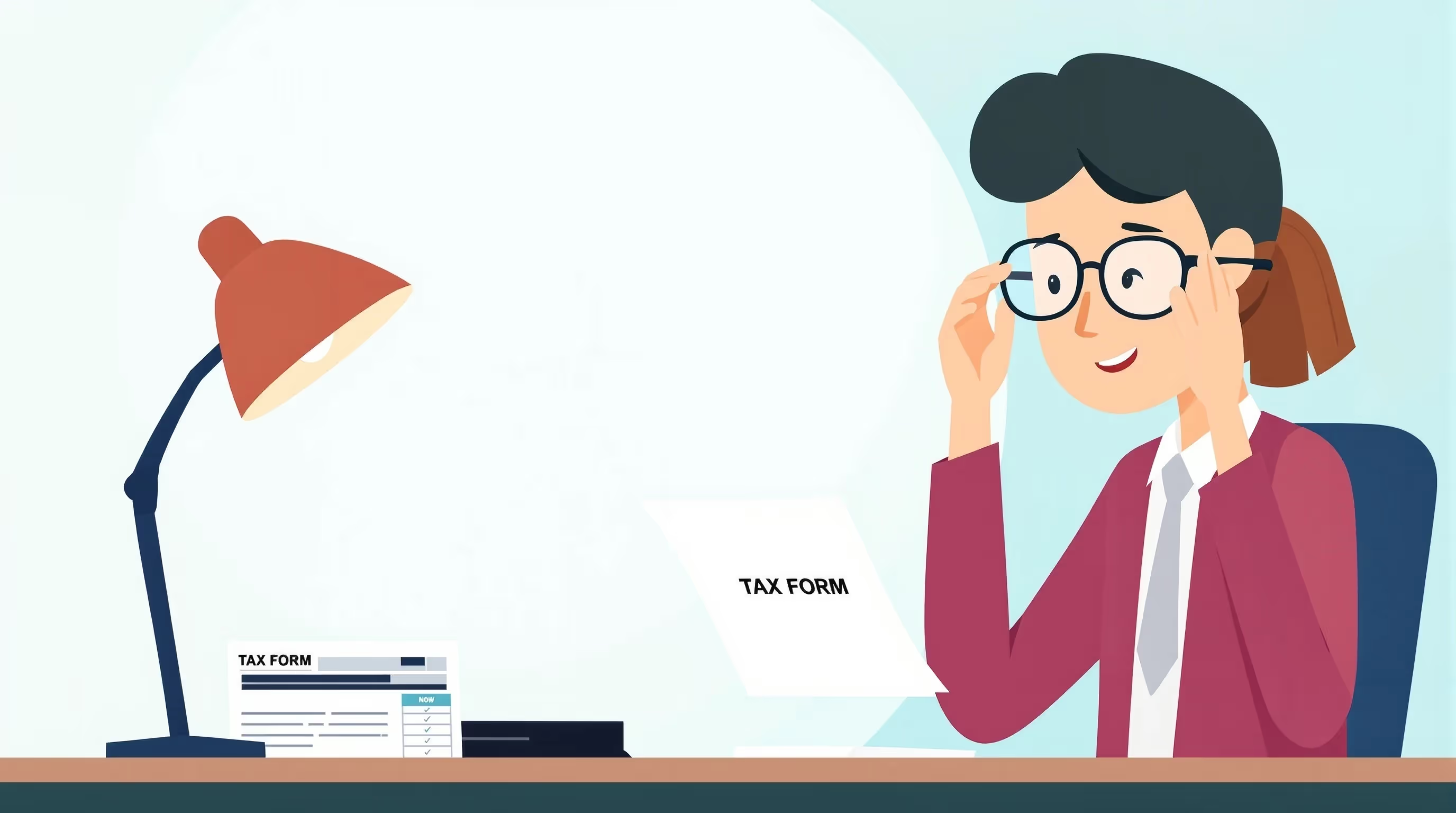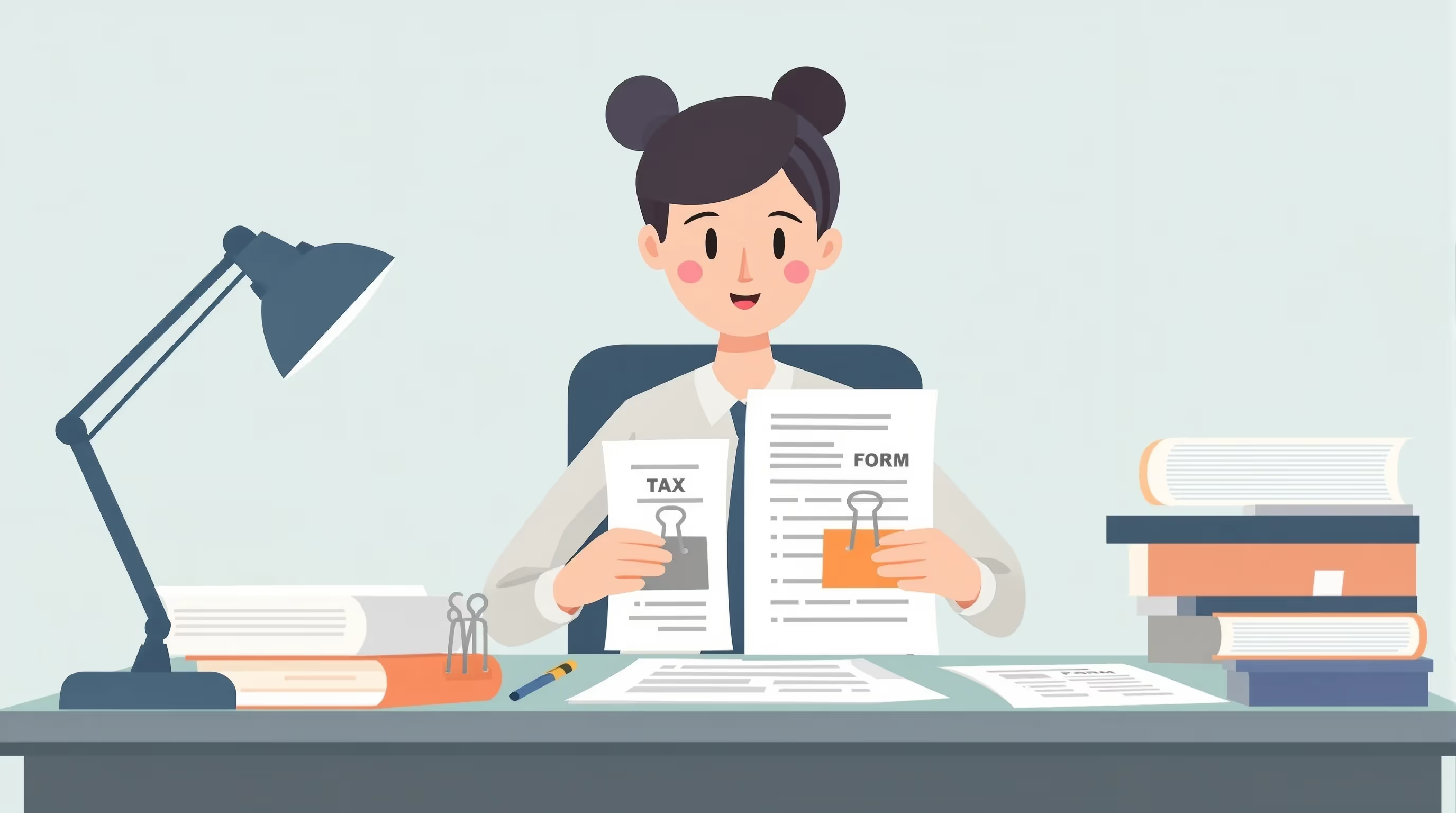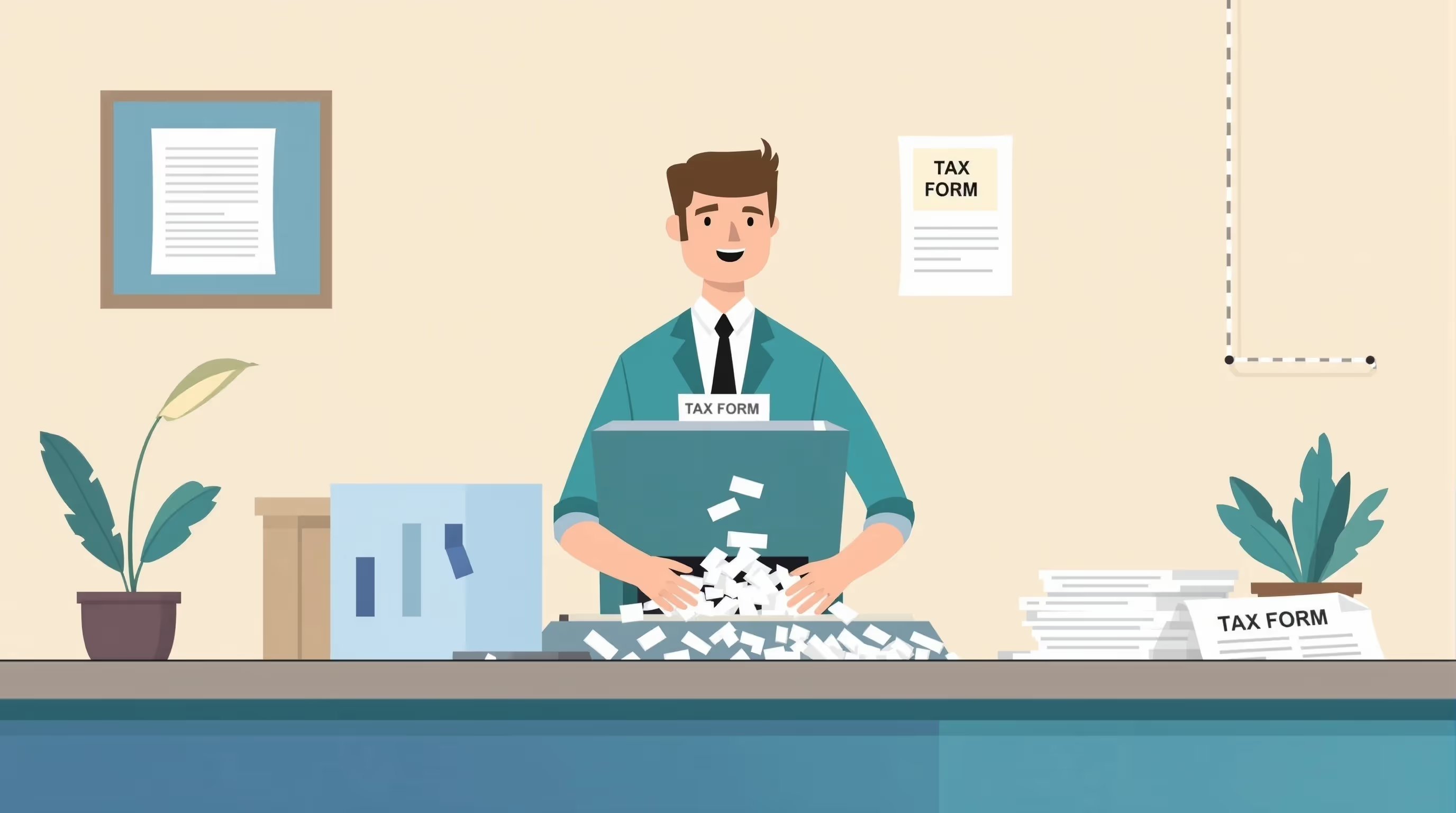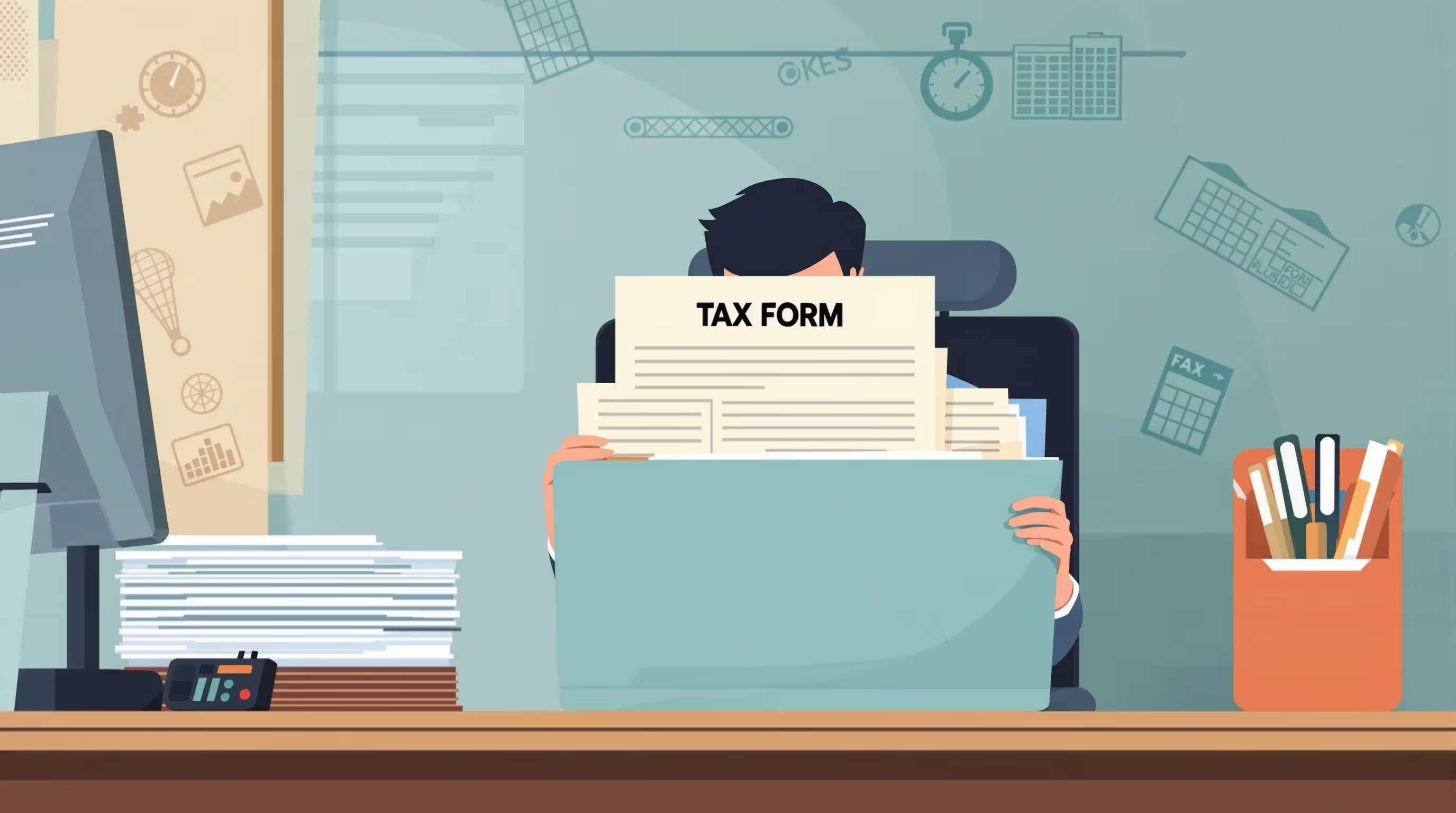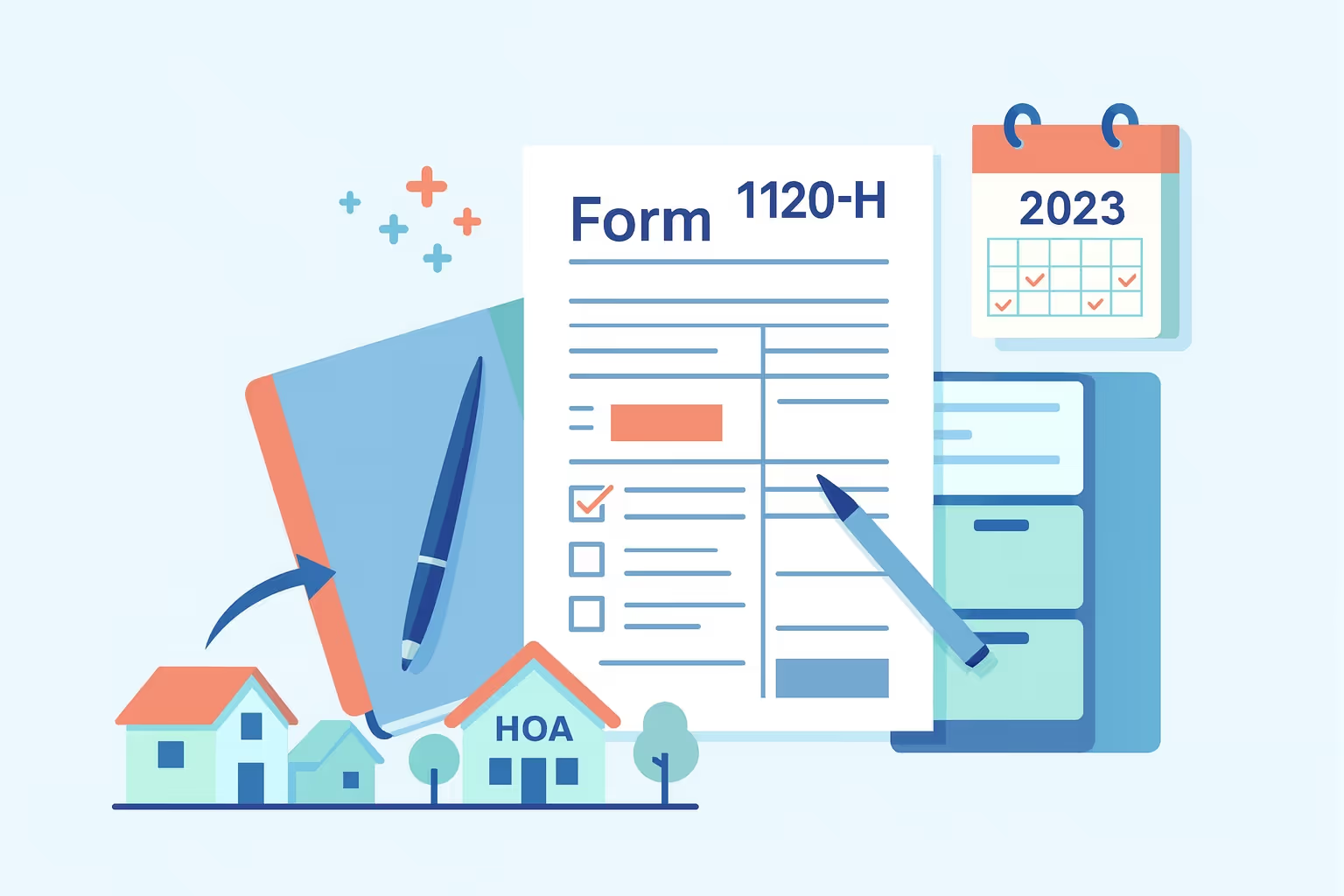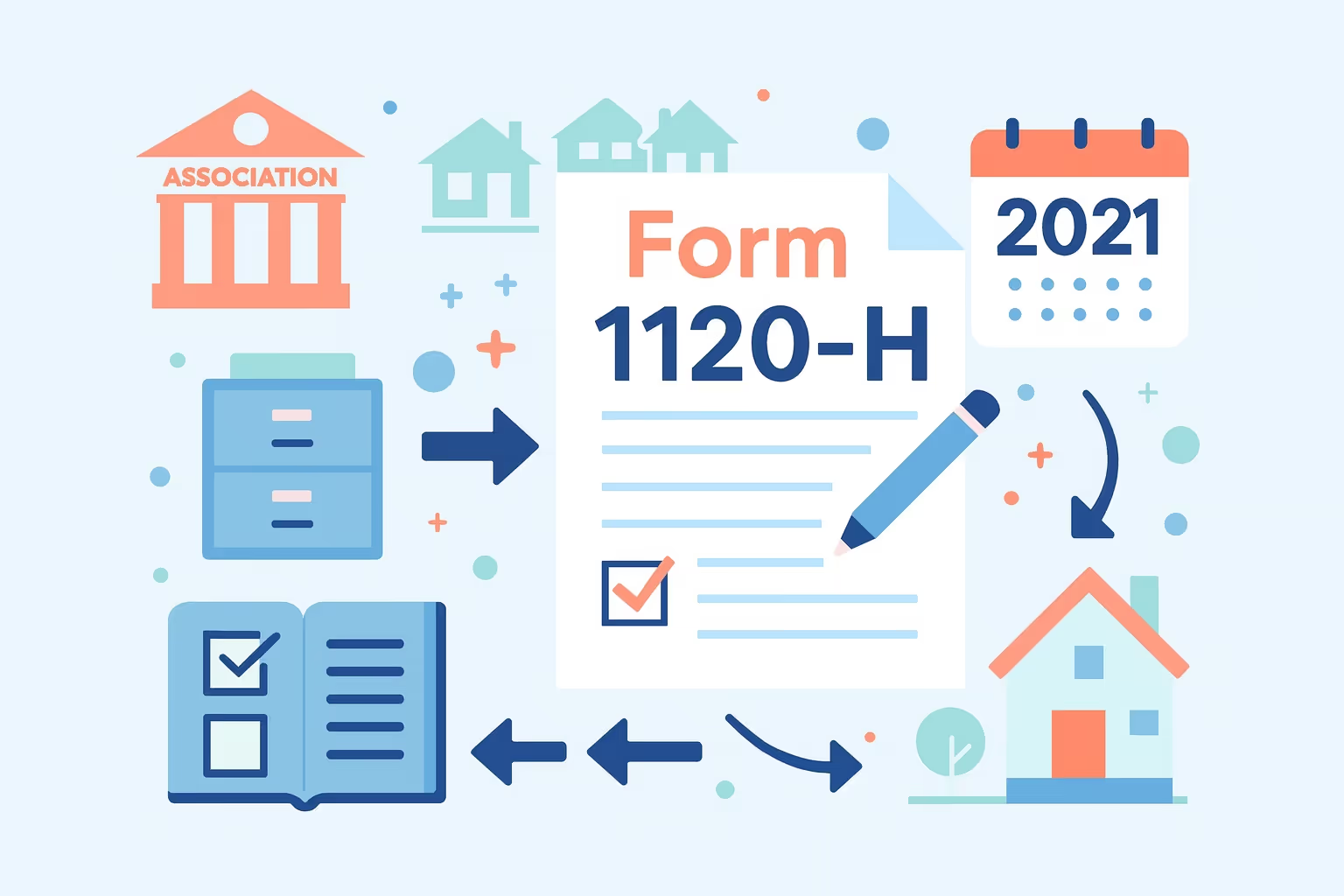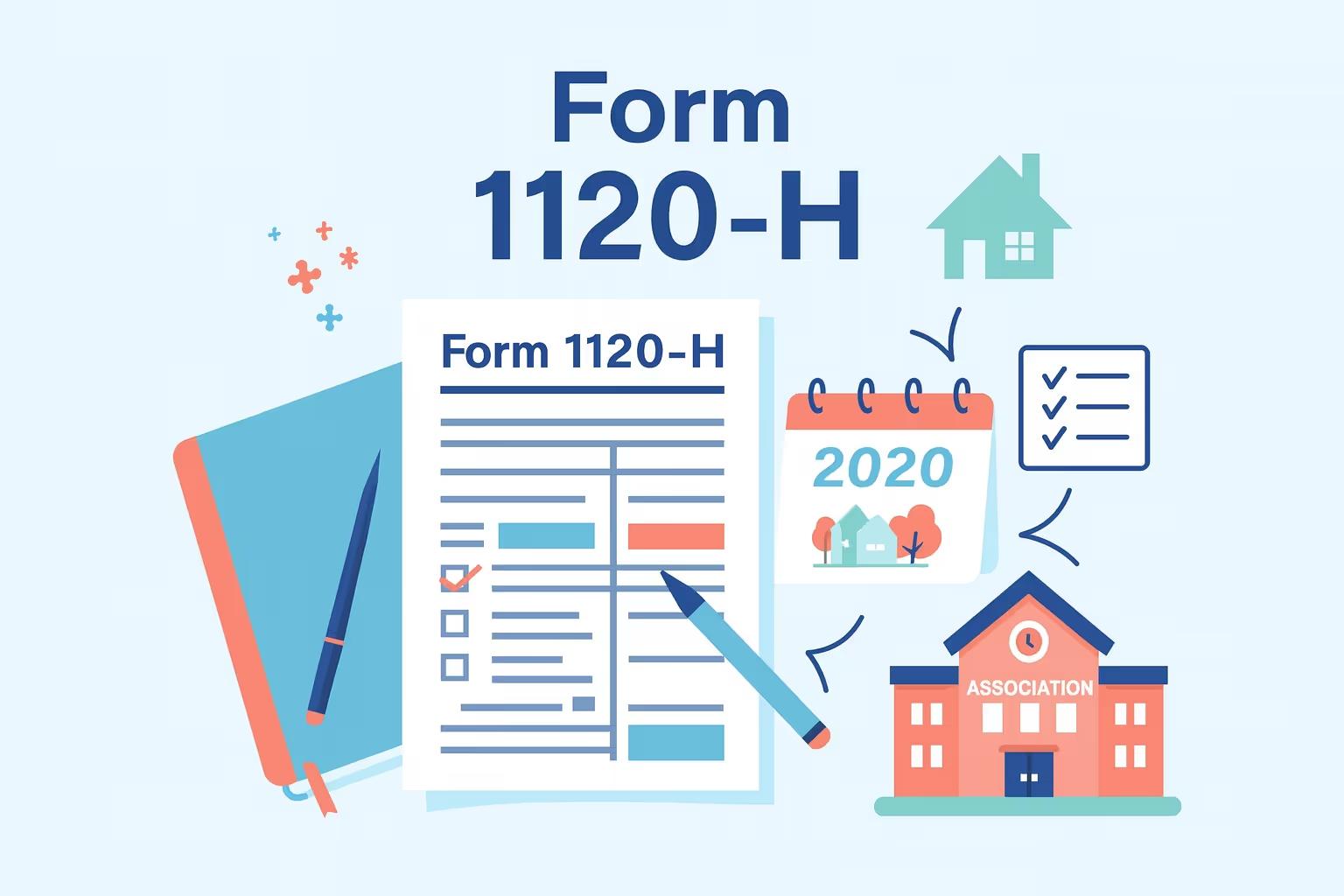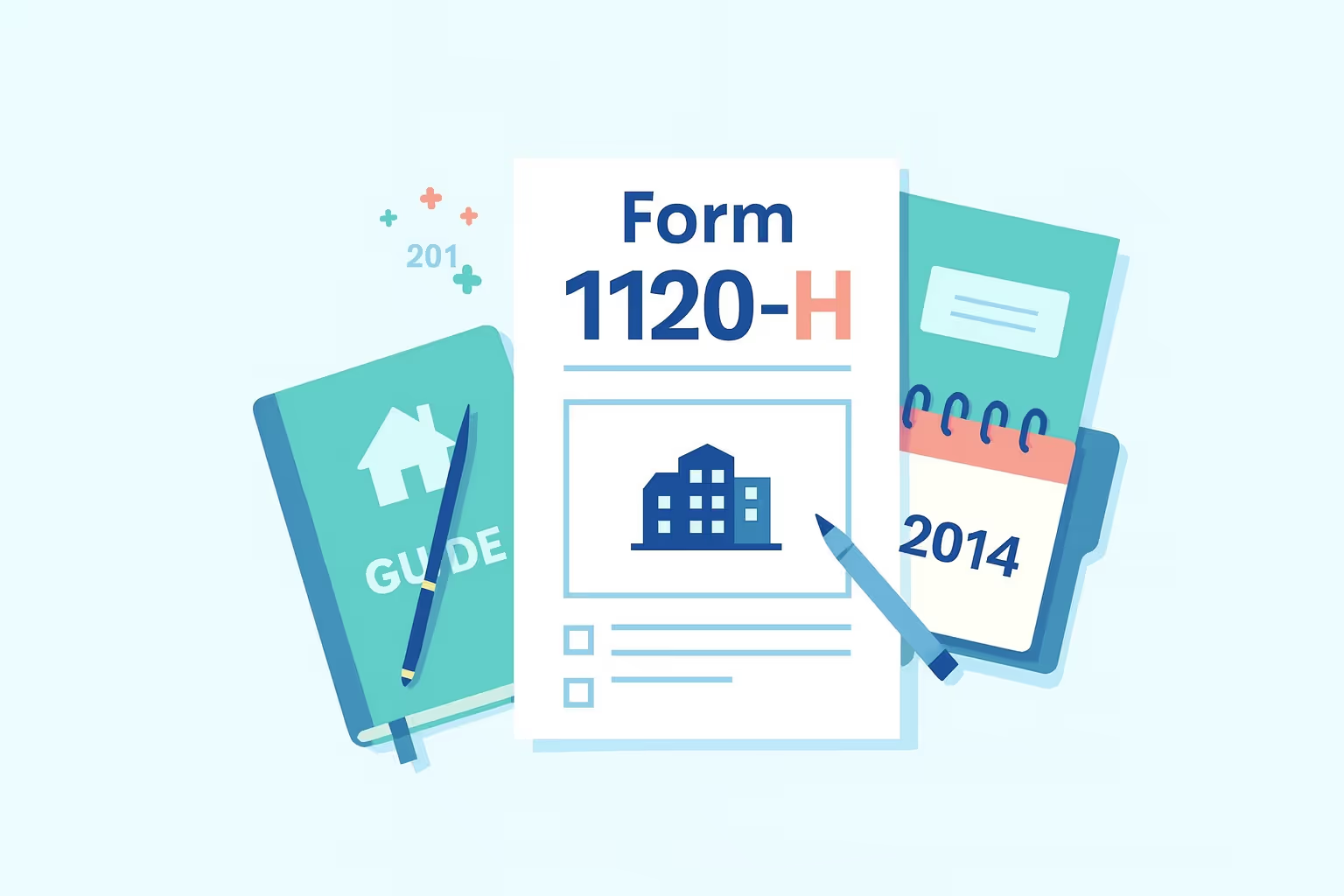How to File Federal Form 1120-H for Tax Year 2022 (HOAS)
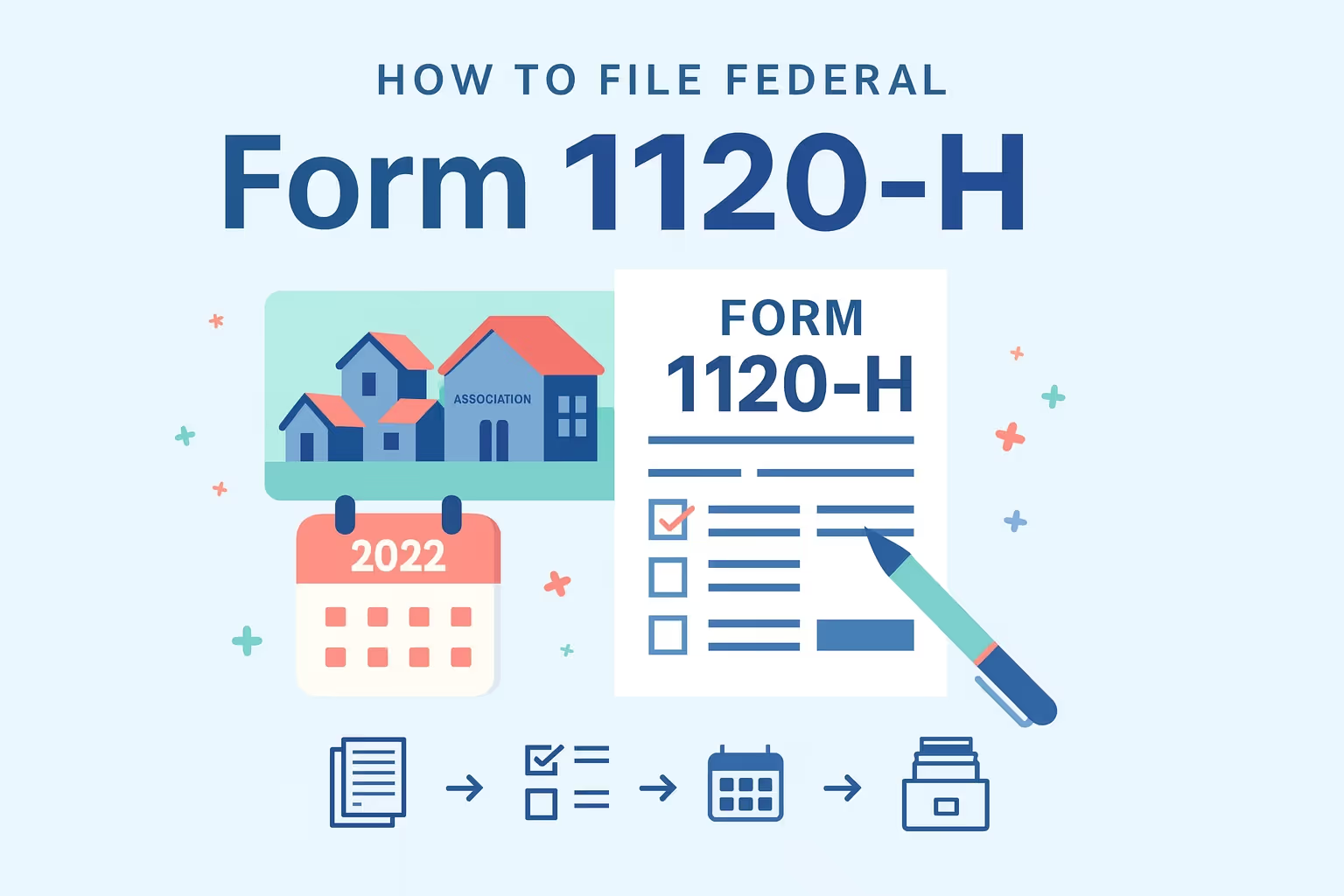
Every year, thousands of homeowner associations face a critical task: filing their annual income tax return with the Internal Revenue Service. For the 2022 tax year, failing to file correctly or on time could mean penalties of up to 25 percent of the unpaid tax, not to mention delays in refund processing that can stretch for months. Filing mistakes are surprisingly common, from misclassifying exempt income to overlooking deductions, and the IRS shows little leniency when deadlines are missed.
Federal Form 1120-H for Tax Year 2022 offers homeowners associations, condominium management associations, and timeshare associations a way to secure certain tax benefits. By filing this form, associations can exclude exempt function income from gross income, such as membership dues and assessments. Only non-exempt items like investment earnings and clubhouse rentals to non-members are taxed. With the correct filing, associations pay a flat tax rate—30 percent for most associations and 32 percent for timeshare associations—on taxable income only, saving money and simplifying compliance compared to a standard corporation income tax return.
Yet filing the form properly is not optional; it is a regulatory requirement under the Internal Revenue Code that must be renewed annually. A missed deadline, incorrect calculation, or late payment can cost an association hundreds of dollars in penalties and interest. This guide breaks down the filing process, showing how homeowners' association files should be prepared, what information to gather, and how to avoid the most common errors. Filing Federal Form 1120-H for Tax Year 2022 can protect your association’s finances and reduce stress during tax season.
Understanding Federal Form 1120-H for Tax Year 2022
Federal Form 1120-H for Tax Year 2022 is a corporation income tax return designed explicitly for homeowners' associations. Unlike the regular corporate tax form (Form 1120), it allows qualifying associations to exclude exempt function income from gross income. Exempt function income consists of membership dues, assessments, and fees paid by property owners to cover standard area association services such as maintenance, utilities, and real estate taxes. The association’s net earnings from exempt income are not taxed using this form, creating a substantial financial advantage.
The Internal Revenue Service created Form 1120-H under Section 528 of the Internal Revenue Code. This section provides certain tax benefits for associations that meet strict qualification rules. Once filed, the form becomes a regulatory election for that tax year, meaning the homeowners association elects to be taxed under these special provisions rather than standard corporate tax rules.
Who Can File Form 1120-H?
Not every organization that collects assessments qualifies. The IRS restricts eligibility to three categories:
- Condominium Management Association: Must manage condominium housing units where most units are individually owned residences. The association is responsible for providing services such as repairs, landscaping, and shared property maintenance.
- Residential Real Estate Management Association: This group covers subdivisions, planned developments, or similar communities where substantially all buildings or lots are residential real property. Associations in this group often manage tennis courts, playgrounds, or shared parking areas.
- Timeshare Association: This applies when the association manages property in which members hold timeshare ownership interests. Because of their unique structure, timeshare associations face a slightly higher tax rate.
Each association must also meet two financial tests: at least 60 percent of gross income must be exempt function income, and at least 90 percent of expenditures must go toward acquiring, building, managing, or caring for association property.
Benefits of Filing Form 1120-H
This filing option provides multiple tax benefits:
- Exclusion of exempt income: Homeowners' associations may exclude exempt function income, such as membership dues, from taxable income. This dramatically reduces the association’s total tax.
- Flat tax rates: Condominium and residential associations pay a 30 percent tax on taxable income, while timeshare associations pay 32 percent.
- Simplified reporting: The form requires only taxable income and allowable deductions instead of complex corporate accounting. Even small associations with limited accounting resources can handle the filing when records are properly organized.
- Flexibility: A homeowners' association can compare both forms each year. If filing Form 1120 produces a lower total tax, the association can choose that return instead.
Comparison Between Form 1120 and Form 1120-H
Form 1120 (Corporate Tax Return)
- Filing Requirements: Standard corporate income tax return required for all corporations.
- Tax Rate: Graduated corporate tax rates, up to 21% on all net income.
- Complexity: Requires detailed reporting of all income and expenses.
- Common Use Case: Often used by associations with significant non-member income or those that fail IRS qualification tests for Form 1120-H.
Form 1120-H (HOA Election)
- Filing Requirements: Available to homeowners associations, condominium associations, and timeshare associations.
- Tax Rate: Flat 30% on taxable income (32% for timeshares).
- Complexity: Simplified reporting, since exempt function income (like dues and assessments) can be excluded.
- Common Use Case: Best for associations whose primary income comes from membership dues and assessments.
Filing Requirements and Deadlines
A homeowners association only files Federal Form 1120-H for Tax Year 2022 if it meets the IRS qualifications. First, the association’s gross income must largely come from exempt function income, consisting of membership dues, fees, and assessments to cover everyday expenses.
Second, at least 90 percent of the association’s total expenditures must be spent on acquiring, building, managing, or maintaining association property. These conditions ensure that the tax benefits provided by Section 528 of the Internal Revenue Code apply only to associations serving their members’ collective interests.
Associations must also confirm that no private shareholder or individual benefits from the association’s net earnings, except for reasonable compensation for services or property use. These tests safeguard the purpose of the filing option, ensuring that the return for homeowners associations remains a tool for managing community funds rather than generating private profit.
Due Dates and Extensions
The filing requirements extend to timing. For calendar-year associations, the due date is April 15 of the following year. The deadline shifts to the next business day if the date falls on a legal holiday or weekend. Fiscal-year associations generally file on the 15th day of the fourth month after the year ends, except for fiscal years ending June 30, which file by the 15th day of the third month.
Associations unable to file on time may request an extension by submitting Form 7004. This provides an additional six months but extends only the filing deadline, not the time to pay. All federal tax owed must be paid by the original due date to avoid interest or penalties.
Penalties for Noncompliance
The Internal Revenue Service enforces strict penalties for late filing or payment. A failure-to-file penalty equals up to 5 percent of the unpaid monthly tax per month, up to 25 percent. The failure-to-pay penalty equals 0.5 percent per month, also capped at 25 percent of the balance. In addition, interest accrues daily on unpaid tax. These amounts can escalate quickly, especially for associations managing large condominium housing units or timeshare ownership interests.
By filing on time, organizations avoid the larger failure-to-file penalty even if the association cannot pay the full amount. Filing early, filing electronically, and paying through IRS-approved systems are the safest ways to prevent costly mistakes.
Step-by-Step Guide to Completing the Form
Filing Federal Form 1120-H for Tax Year 2022 may look intimidating, but breaking it into smaller steps makes the process manageable. Each stage requires careful attention to detail, since an error can trigger penalties or delays in processing. The following steps outline how a homeowners' association elects to file this special tax return correctly.
Step 1: Gather Required Information
Before completing the form, collect the documents your association will need.
- You must have the association’s legal name, current mailing address, and Employer Identification Number (EIN). Using outdated or incorrect details could cause the Internal Revenue Service to reject the filing.
- Assemble financial records for the tax year. These should include income statements, expense records, bank statements, investment summaries, and other supporting documents.
- Keep prior year tax forms available for reference. A properly completed form requires consistency across years to avoid IRS scrutiny.
Step 2: Fill Out Header and Items A–E
The header identifies your association and establishes its filing basis.
- Enter the association’s name and EIN exactly as registered. Any mismatch with IRS records may cause processing delays.
- Indicate whether the return covers a calendar year or a fiscal year. Associations must specify dates accurately to comply with filing requirements.
- Under Item A, select the correct type of association: condominium management association, residential real estate management association, or timeshare association.
- Complete Item B, the 60 percent gross income test. Exempt function income consists of membership dues, fees, and assessments. Divide this by total gross income. If the result is less than 60 percent, the association cannot file Form 1120-H.
- Complete Item C, the 90 percent expenditure test. Expenditures must primarily support association property, such as maintenance, repairs, and utilities. At least 90 percent must qualify.
- Report tax-exempt interest received in Item E. This may include income from municipal bonds.
Step 3: Report Income
Income reporting is one of the most common areas where associations make mistakes.
- Exempt income: Membership dues, assessments for maintenance, and other fees directly tied to providing services for members. These amounts are excluded.
- Non-exempt income: Interest, dividends, capital gains, clubhouse rentals to non-members, or income from cell tower leases. These amounts form the basis of taxable income.
- Example: If an HOA collects $200,000 in assessments and $10,000 from renting tennis courts to non-members, only the $10,000 is taxable.
Associations must carefully distinguish exempt income from taxable income. Mixing them could inflate net income and increase total tax unnecessarily.
Step 4: Report Deductions
Only deductions tied directly to producing taxable income may be claimed.
- Allowable deductions: Investment management fees, tax professional fees, paid preparer charges, office supplies for investment activities, and banking fees on investment accounts.
- Automatic $100 deduction: Every homeowners association filing Federal Form 1120-H for Tax Year 2022 receives this benefit. It must still be entered correctly to reduce taxable income.
- Capital gains: If the association sells securities or real property unrelated to exempt services, deductions linked to those sales may apply.
If the association pays a tax professional $2,000 to prepare the tax return and $500 in fees to manage reserve investments, these can reduce taxable income. However, landscaping or utilities for association property cannot be deducted because they relate to exempt function income.
Step 5: Calculate Taxable Income and Total Tax
After reporting income and deductions, the association calculates taxable income.
- Subtract total deductions from total non-exempt income.
- Apply the correct tax rate: 30 percent for most homeowner's associations and 32 percent for timeshare associations.
- If applicable, reduce tax with any credits, such as the foreign tax credit or general business credit.
A residential HOA reports $12,000 in taxable income after deductions. Applying the 30 percent rate results in a $3,600 total tax liability. If the HOA has $500 in tax credits, the total tax owed drops to $3,100.
Step 6: Filing and Payment
The final stage is submitting the return and paying any tax due.
E-filing:
E-filing is required if the association files 10 or more federal tax forms annually. This total includes information returns such as 1099s or W-2s, so many associations meet the threshold quickly. E-filing also provides faster processing, with refunds typically issued within 30 days or less compared to more than eight weeks for paper filings. In addition, it offers built-in error checks and instant confirmation through the IRS website, reducing the risk of mistakes.
Paper filing:
Paper filing is available for more minor associations that file fewer than 10 total returns. The completed return must be mailed to the correct IRS address, which varies depending on the association’s residence. However, paper filing is slower and more prone to errors, which can delay processing and increase the likelihood of follow-up notices from the IRS.
Comparison of E-filing vs Paper Filing
E-Filing
- Processing Time: About 2–3 weeks.
- Refund Speed: Typically received within 30 days.
- Error Rate: Lower, thanks to built-in software validation.
- Confirmation Proof: Immediate electronic acknowledgment of submission.
Paper Filing
- Processing Time: 6–8 weeks or longer.
- Refund Speed: Often 8+ weeks, sometimes longer during peak filing season.
- Error Rate: Higher, with more risk of math errors or clerical mistakes.
- Confirmation Proof: Only a postal delivery receipt if mailed certified—no IRS confirmation until processed.
Associations must also ensure that federal tax is paid by the due date. Payment options include IRS Direct Pay, EFTPS, or same-day wire through a bank. Mailing a check with the return is discouraged, as it slows processing and risks late posting.
Common Mistakes and How to Avoid Them
Even when associations qualify to file Federal Form 1120-H for Tax Year 2022, mistakes in reporting can lead to penalties, excess tax paid, or IRS notices. By recognizing these issues in advance, associations can file a more accurate return and preserve the tax benefits provided by Section 528 of the Internal Revenue Code.
Income Misclassification
One of the most common errors is including exempt function income in taxable income. Membership dues and assessments for association services should be excluded, while non-member revenue, such as clubhouse rentals, advertising, or late fees, must be included. Misclassifying income inflates taxable income and increases total tax. Associations should carefully review financial records to separate exempt income from non-exempt income before filing.
Expense Allocation Errors
Another frequent problem is deducting expenses tied to exempt activities. Only expenses connected to producing taxable income can be deducted. For example, landscaping of association property is not deductible, since it relates to exempt services. However, legal fees to negotiate a non-member lease or banking fees on investment accounts are deductible. Correct expense allocation protects the association from IRS challenges and reduces unpaid tax risks.
Filing Errors
Clerical mistakes are surprisingly costly. Forgetting to claim the automatic $100 deduction is common, and applying the wrong tax rate—30 percent instead of 32 percent for timeshare associations—is another frequent issue. Associations should double-check that every completed form reflects the correct category, tax rates, and total deductions.
Payment Mistakes
Associations often send payment with the paper tax return, which slows processing and increases the chance of late posting. Payments should be made electronically through IRS Direct Pay, EFTPS, or wire transfer. Estimated tax payments are not required for associations electing to file Form 1120-H, which is a key benefit. Still, all final payments must be submitted by the original due date to avoid penalties.
By addressing these mistakes before submission, associations reduce the chance of IRS scrutiny and protect their net income from unnecessary taxation. Careful preparation ensures that the return for homeowners' associations fulfills all filing requirements without triggering penalties or audits.
Special Situations and First-Time Filers
While most associations file similarly each year, some circumstances require special attention. Federal Form 1120-H for Tax Year 2022 still applies, but the approach may differ depending on activity level, filing strategy, or experience level.
Zero Activity or Dormant Year
A homeowners' association may experience a year with no taxable activity. Filing a return for homeowners' associations can be beneficial even in these cases. Submitting completed form documents continues compliance and preserves the election under Section 528 of the Internal Revenue Code. For example, taxable income is zero if an HOA collects only exempt function income, such as membership dues, and pays routine real estate taxes. However, the filing still establishes a record with the Internal Revenue Service.
Filing in dormant years also prevents confusion. The association could face inquiries or penalties if the IRS notices missing filings. While technically not always required, many associations file anyway to avoid risk.
Choosing Between Form 1120 and 1120-H
Each tax year, a homeowners association elects whether to file Form 1120-H or the standard Form 1120. Filing Form 1120 may lower the total tax if the association generates significant non-member revenue or capital gains. However, the corporation's income tax return is more complex and requires detailed net income accounting.
Form 1120-H simplifies reporting by allowing associations to exclude exempt function income and apply flat tax rates. Tax professionals recommend calculating liability under both forms and choosing the lower amount owed. This strategy ensures the association receives the full tax benefits provided by law.
First-Time Filing Tips
For associations filing for the first time, preparation is essential.
- Obtain an Employer Identification Number from the IRS website if the association does not yet have one.
- Establish bookkeeping systems that clearly separate exempt income from taxable income. This will improve the accuracy of calculating total deductions and net earnings.
- Review governing documents to confirm eligibility as a condominium management association, timeshare association, or residential real estate management association.
- Consider hiring a tax professional, especially if the association manages large amounts of real property or has complex income sources.
Following these steps ensures first-time filers avoid unnecessary penalties, maintain compliance, and set the stage for easier filings in future years.
FAQs
What is exempt function income on Federal Form 1120-H for Tax Year 2022?
Exempt function income consists of membership dues, assessments, and fees collected to fund the association’s services, such as maintaining common areas or paying real estate taxes. When a homeowners' association files its return, these amounts are excluded from taxable income. By not counting exempt function income as part of their total income, associations lower their overall tax bill and keep the tax advantages allowed by Section 528 of the Internal Revenue Code.
Can homeowners' associations exclude exempt function income from gross income?
Yes, homeowners' associations filing Federal Form 1120-H for Tax Year 2022 may exclude exempt function income from gross income. This means assessments for landscaping, utilities, and other association property services are not taxed. Only income from non-member sources, such as tennis courts rented to outsiders or investment dividends, must be included as taxable income. Correctly separating exempt income from taxable income is essential for an accurate tax return.
Do timeshare associations follow the same tax rates?
Not exactly. Condominium and residential associations pay a flat 30 percent tax on taxable income. Timeshare associations pay 32 percent due to their unique ownership interests. The Internal Revenue Service applies these rates regardless of whether the association is in South Carolina, West Virginia, Rhode Island, North Dakota, or South Dakota. Each homeowners' association elects which form to file annually: Form 1120 or Form 1120-H.
What happens if the association’s gross income includes capital gains?
If a homeowners' association reports capital gains from the sale of securities or real property, those gains are taxable income on Form 1120-H. The association may claim related deductions, such as brokerage or legal fees, to reduce net income. Associations must attach additional forms, like the Schedule, to report transactions. Capital gains do not qualify as exempt income, increasing total tax owed if not offset by deductions or credits.
Can estimated tax payments be avoided for HOAs?
One advantage of filing Federal Form 1120-H for Tax Year 2022 is that associations are not required to make estimated tax payments. This rule simplifies cash management for HOAs, notably for minor associations or those with limited net income. However, any federal tax owed must still be paid by the return's original due date. Paying late can trigger penalties and interest, even if the tax return for homeowners is filed on time.






